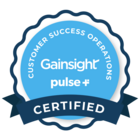Hi,
I have one dataset with my company data and the standard deviation of one of these fields. I want to merge it with another dataset where I have only one record with the Average for the same field but for the whole population.
If I merge them keeping the record with both dataset, I get one line with the average of the population but all the other fields blank and the other lines with all the fields filled in but the average of the population.
Now, what I am trying to achieve, is to compare the average of the whole population with the value of the field per line. So what I need to do is to have that value repeated for each line.
Any idea how can I achieve it?


